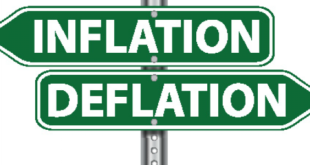Measuring the market value of goods and services produced in a particular period of income monetarily is called Gross Domestic Product (GDP). This time period is normally on a quarterly or yearly basis. Nominal GDP estimates determine the economic performance of a country or a particular region. The widest use of GDP is to determine the economic performance and make international comparison. Although it does not reflect the inflation rates or cost of living it is useful in comparing the standards of living between various nations.
Gross Domestic Product
In economic terms, GDP is defined as ‘an aggregate measure of production equal to the sum of gross values added of all resident and institutional units engaged in production plus any taxes, minus any subsidies on products not included in their output value’. In other words, a GDP measures the monetary value of goods and services that are produced in a country during a given period of time and bought by the end user. It includes all the investments, private sector consumption, government outlays, public sector consumption,paid-in construction costs, private inventories and foreign balance of trade. In finding the balance of trade, the imports are added while exports get subtracted. Thus in the broadest sense of the term, GDP is a measurement of the overall economic activity of the nation.
How to Calculate GDP ?
There are three ways of calculating GDP, namely expenditure approach, income approach and output approach. All three are different from each other but when calculated correctly yield the same result.
Expenditure Approach
Expenditure or spending approach is the most commonly adopted method of calculating GDP. As the name suggests, it calculates the money spent by different groups participating in an economy. For example, people spend money to buy various commodities like groceries, clothes, goods like home appliances, electronic items, etc. They also spend money on different services like banking services, loans, vehicle servicing, etc. The businesses spend money on various activities like buying machinery, hiring resources, building and maintaining infrastructure and the like. Primarily, businesses spend the money they invest for various business related purposes. The government spends money on maintaining the public sector such as maintaining roads, providing transport for the people and providing various infrastructure for maintaining the growth. In short, everybody send money for different purposes in different sectors. All these activities add up to the GDP of a particular country. In addition to this ‘in-house’ expense, goods are exported from an economy to other countries. For calculating GDP they also take into account the money spent on import and export. GDP is thus calculated using the formula:
GDP = C + G + I + NX, where,
C is consumer spending,
G is sum of government spending,
I is sum of country investment
NX is nation’s net export.
Nation’s export is calculated by subtracting the imports from the exports.
Income Approach
Whatever is spent by you is earned by somebody. This is the principle of calculating GDP using income approach. Here, the income earned by different sections of production in an economy is taken into account. It includes salaries paid, rent earned, return on the capital in the form of interest, entrepreneur’s profits, etc. The profits of an entrepreneur include investment made within as well as outside the business. These are an indication of implied expenditure and productivity.
Also See : What is Inflation and Deflation ?
Output Approach
Output approach is often referred to as GDP calculation based on production. It is an exact opposite of expenditure approach. While It does not measure the input cost but measures the total value of economic output. It also deducts the cost of intermediate goods that are consumed.
The chief difference between expenditure approach and output approach is that while expenditure approach looks forward beyond the intermediate costs, production looks backward.
Although GDP is a good way to know that state of an economy, it is far from perfect. This is especially because it only takes into account the activities falling under the legalized economy. It does not consider activities that do not fall under this category.
 Think Plan Do Act | Your Online Finance Companion
Think Plan Do Act | Your Online Finance Companion
